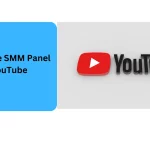Video marketing has become ubiquitous in the online experience. Videos are on virtually every social media platform, website, and app, ads appear before, during, and after, and new trends and technologies emerge all the time.
There’s no question that the future of video marketing is going strong. There are some key trends that we may expect in the coming years that can revolutionize the industry.
Future of Video Marketing: Producing Videos Will Become Easier
One of the most significant trends in video marketing is how easily virtually anyone can make a polished, shareworthy video. With the advancements in technology and software, it’s becoming easier and easier for people to make high-quality videos, even without high-tech equipment and formal videography and editing skills.
Of course, making a video is about more than simply creating and editing a video on your phone. You need to incorporate the right elements at the right time, polish the footage to make it easy to watch, and more. Commercial video production services are still the best choice for companies that want professional brand videos.
Trending Sounds Will Stay
Incorporating audio into social media video content can add some new elements to boost engagement and interest. For example, background music and sound effects, especially trending ones, can build more anticipation for the video’s message and forge an emotional connection with the audience. Voiceovers are also a powerful way to show compelling visuals without losing the message in the process.
Incorporating trending audio into your video marketing strategy can significantly improve your results by getting more audience engagement, especially on TikTok and Instagram, and enhancing brand recognition.
More Platforms Will Add Video-Specific Features
As video becomes more and more popular, major platforms are adding video features to attract and engage users – and encourage marketers to share more videos. While this type of content is essential on a platform like YouTube or TikTok, platforms like Pinterest, LinkedIn, and X (formerly Twitter) are investing in video to stand out from competitors.
Repurposed Videos
Video is a powerful tool, but it takes time and effort to create effective videos. As a result, repurposing videos will likely grow in the next few years to give content creators more mileage out of their investment. Instead of creating new videos every time, you can create one polished video and then repurpose it for multiple platforms.
For example, you can create a long-form video for YouTube and adapt it to platforms that support more short-form content, such as Instagram or TikTok. This offers even more video content since you can break up a longer video into a series of short clips that are released over time. You could turn videos into stills or GIFs as well.
Video Ads Will Ramp Up
Like general marketing, video advertising has become an increasingly popular way for businesses to engage more audiences. Video advertising trends are expected to continue in the coming years. Google has plans for App campaigns and other elements that will make ads more effective for businesses.
More Interactive and Shoppable Videos
As video becomes more widely used, we can expect to see a rise in interactive and shoppable videos that allow businesses to create an immersive, in-app shopping experience that’s completely convenient and seamless.
These types of videos allow users to make purchases directly from the video without clicking links, navigating to websites, or looking for products on their own. They can browse, select, or purchase products while the video is still playing, combining the shopping experience with entertainment.
More Educational Videos
Video content encourages retention more than text, which is why we may see more educational videos in the next year. Visual content is not only more compelling, but it makes it easier to break down complex concepts into easily digestible information.
Brands can use educational videos to communicate key messages, educate the audience about features, products, or initiatives, and promote their offerings. They may also be used to explain how a product or service works, such as a how-to video, or demonstrate a complex aspect of a product.
More Personalization Driven by AI
Personalization is the key to winning a viewer. AI-driven personalization uses advanced algorithms to customize video content and align it with the unique interests and preferences of each viewer, rather than giving them generic videos.
The benefits of personalization go far beyond sentiment, however. These videos can enhance engagement, boost brand loyalty, and improve conversion rates, so we can expect to see an increase in AI personalization.
Vertical and Short-Form Videos Will Dominate
Vertical and short-form videos are the new trendsetters. YouTube is experimenting with a vertical video format to compete with TikTok, much like the addition of Shorts, and Instagram has been increasingly focused on video-first features.
Both vertical and short-form video content not only cater to mobile devices but also work well with social media. People have short attention spans and face a number of enticing distractions from all directions. Short-form content doesn’t take up much time and works well on the go.
Also Read
Live streaming and Real-Time Engagement Will Become a Fixture
Livestreaming isn’t a passing trend. It’s become a staple in the digital landscape. Brands that use real-time engagement are establishing connections with their audience that are authentic, impactful, and memorable.
One of the drivers of livestreaming’s popularity is the ability to infuse brands with a more human touch. These videos showcase not just the brand but the individuals who make it, fostering a deeper emotional connection. Some of the best options for live streams include Q&A sessions, product launches, and behind-the-scenes tours.
VR Videos Will Captivate
Augmented reality (AR) and virtual reality (VR) have been on the rise. These captivating formats are revamping storytelling and immersing viewers in unique worlds, particularly for highly visual brands like tourism companies, fashion brands, and video game designers.
As more budget-friendly VR headsets and cameras hit the market, the ability to create and enjoy VR videos will become more accessible, leading to more opportunities for VR video marketing.
User-Generated Content Is on the Rise
User-generated content (UGC) is an ideal way for brands to harness the power of the community and attract more people. When you encourage your users to share their experiences with your brand, you cultivate a profound sense of community and loyalty.
UGC campaigns can take many forms, including reviews, tests, testimonials, use cases, success stories, or even complaints. These concepts offer real-world, authentic perspectives, however, so it’s likely that more and more users will adopt their own video strategies to influence the purchasing decisions of others.
More Video Marketing Will Rely on Data-Driven Insights
With the wealth of data that companies amass – combined with a demand for more personalization from consumers – it’s no wonder that data is becoming a vital part of the decision-making process.
Because video marketing can be involved, relying on data like viewer behaviors and engagement metrics can ensure that you’re putting your time and effort into the best possible strategy. You can use data points to fine-tune your campaigns and improve your outcomes.
Micro-Moments and Snackable Content Will Draw Attention
In our fast-paced society, people want answers to their questions quickly and don’t want to spend time reading lengthy articles or watching hour-long videos to get them. As a result, micro-moments, those intent-rich moments when someone uses a device to act on a need to know, will have a stronghold of the market.
If you, as a brand, can provide the answers the user is looking for in a concise, snackable video, you can position yourself as a valuable resource to the audience. Short, simple videos like these are giving viewers what they want most from social media videos – information that’s easy to find and consume yet provides value.
Make the Most of Video Marketing Trends
The video marketing industry is always evolving. Looking to the next year, the major trends in video marketing – from AI tools to UGC – can have a dramatic impact on the way videos are created and consumed. Check out more stats and trends with the Video Marketing Guide.
Author Bio

Torrey Tayenaka
Torrey Tayenaka is the co-founder and CEO at Sparkhouse, an Orange County based commercial video production company. He is often asked to contribute expertise in publications like Entrepreneur, Single Grain and Forbes. Sparkhouse is known for transforming video marketing and advertising into real conversations. Rather than hitting the consumer over the head with blatant ads, Sparkhouse creates interesting, entertaining and useful videos that enrich the lives of his clients’ customers. In addition to Sparkhouse, Torrey has also founded the companies Eva Smart Shower, Litehouse & Forge54.





